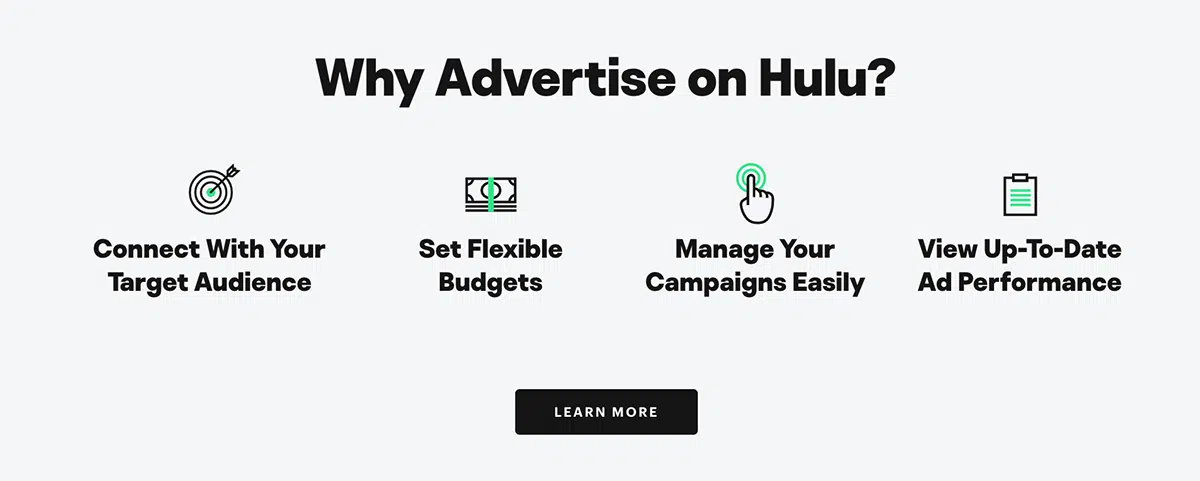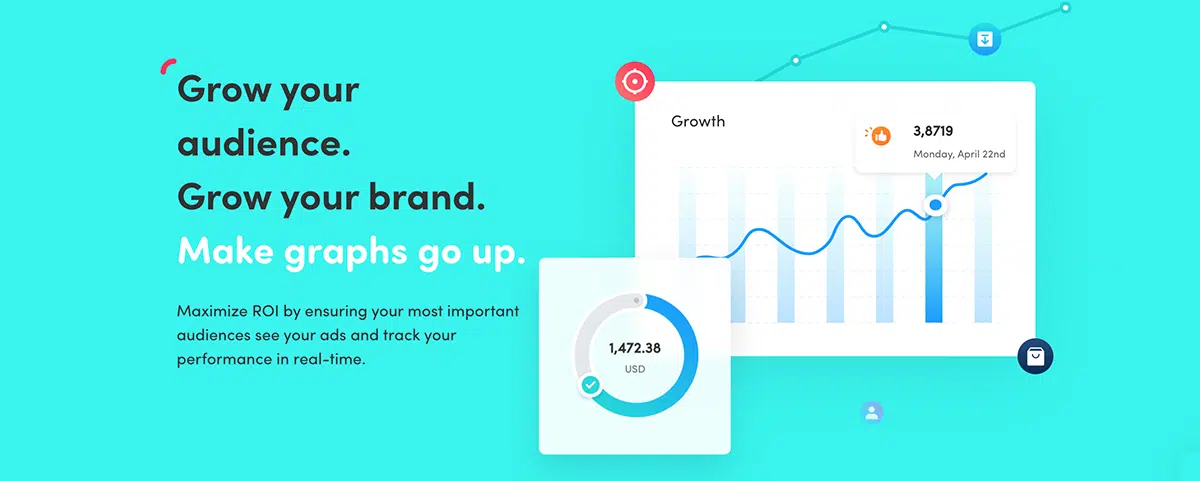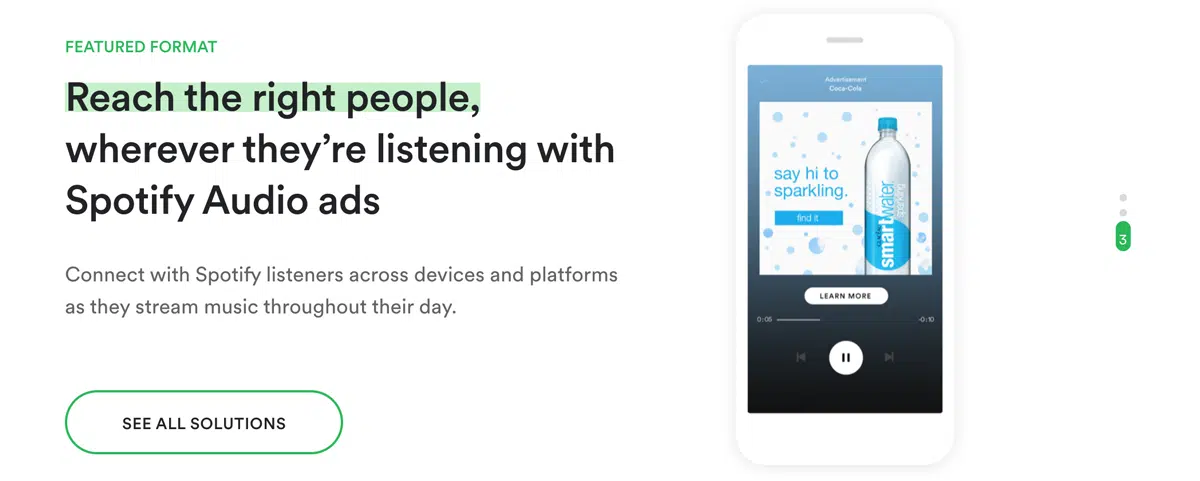At the heart of every brand is a story. While you can tell yours in many ways, a great narrative is best when it comes alive in video. There’s something compelling about the combination of sight, sound and motion that’s tough to overlook—and that’s exactly why smart marketers leverage video advertising to capture attention, drive engagement and build brands.
We all know that video ads work. After all, viewers retain 95% of a message when they watch it in a video, compared to just 10% when reading it in text. But the cost to play hasn’t been cheap, and without a corporate-sized budget, small businesses have been forced to watch—from the sidelines.
Now let’s put this into context: the pandemic has reshaped media consumption. With more people spending time at home, more people are watching TV. And, as more people stream video on their devices, more people are shifting a higher percentage of disposable income to ecommerce. Yes, streaming video is on the rise, and aggressive advertising make sense. But the game is changing, and this is great news.
Self-serve ad platforms are closing the gap between big budgets and video advertising success.
Highly successful streaming media services, like Disney’s Hulu, Spotify and even TikTok are lowering the barrier to entry into the streaming ad market by opening the floodgates to small businesses. In a strategic move, these platforms are offering self-serve tools aimed at smaller companies lacking budget. Now, it’s easy to unleash your creative side and connect with a larger audience—all without making a significant financial commitment.
For small brands, being seen on an established, high profile platform is next to godliness—and being able to test, learn and spend at your own pace—well, that’s pretty great too.
At Dash Two, we think advertising choices should be simple. So, we rolled up our sleeves and did the research. We compared self-serve ad functionality for three high profile streaming platforms: Hulu, TikTok and Spotify. We defined what they have to offer, investigated what you can do with them, and listed out a few pros and cons for each. Here’s how they stack up, alone and against one another.
Hulu Ad Manager

Hulu’s video-on-demand subscription service remains incredibly popular, with a reported 30.4 million users as of February this year. Traditionally, Hulu has partnered with top U.S. brands for advertising, but in June, they expanded their reach by launching **Hulu Ad Manager**, designed specifically for small and medium-sized businesses.
What It Is
- A self-serve platform that allows businesses to upload, target, and measure the performance of short-form video ads on Hulu.
- Currently in limited release, with plans to expand its availability once additional capabilities are developed.
What You Can Do With It
- Create and run 15- or 30-second video ads.
- Target audiences by location, interests, and program genres.
- Track campaign performance in real-time using Hulu’s campaign dashboard.
Pros
- Flexible budgeting with a low minimum spend of $500.
- Access to campaign data through Hulu’s dashboard, including real-time updates.
- Comprehensive targeting options based on age, gender, location (state or zip code), interests, and content preferences.
Cons
- Ads cannot include interactive elements, such as call-to-action buttons.
- Only one ad can be used per campaign, without the ability to display multiple ads in sequence.
- Targeting is restricted to broad genres, with no option to select specific shows.
- Ads must adhere to Hulu’s strict ad policies, and the review process can take up to 3 days.
- No access to Hulu’s customer databases for advanced targeting capabilities.
- Limited campaign performance data: only impressions and budget updates are available, with no insights into which shows display the ads.
How Hulu Ad Manager Differs From the Others
- Strong campaign control: You can stop, pause, cancel, or delete campaigns at any time.
- Hulu boasts the largest streaming TV library among ad-supported platforms, offering access to a massive audience for your ads.
TikTok Ads Manager

TikTok is a rapidly growing video streaming app that allows users to create, share, and discover short-form (15 to 30-second) videos on virtually any topic. As of July, the platform boasts a billion users across 150 countries. Its simplified approach to video creation has fueled its popularity. In 2020, TikTok launched TikTok for Business, which includes the robust TikTok Ads Manager tool.
What It Is
- A self-serve video advertising platform designed to help you optimize video marketing campaigns using an intuitive interface and a variety of tools to create and track ad performance.
What You Can Do With It
- Organize campaigns into Campaigns, Ad Groups, and Ads.
- Set clear objectives for campaigns and define your budget.
- Configure audience targeting, select ad placements, and track performance in real time.
Pros
- TikTok is the 6th most popular app worldwide based on monthly active users.
- Approximately 50% of TikTok users in the U.S. are under the age of 29.
- The platform’s fastest-growing user base is the 25–44 age group, a demographic with high disposable income.
- Flexible budgets make it easy and quick to get started.
- Real-time performance targeting helps advertisers optimize campaigns effectively.
Cons
- Recent concerns over data security and privacy have led some to question the platform’s reliability, potentially affecting its overall ad reach.
How TikTok Ads Manager Stands Out
- TikTok offers a “Back-to-Business” ad credit program, allocating $100 million in ad credits to small businesses facing financial challenges due to COVID-19.
- The platform’s viral nature makes it an exceptionally attractive option for brands aiming to create wide-reaching campaigns quickly.
Spotify Ad Studio

Spotify Ads is the largest digital audio advertising platform, with 90 million ad-supported listeners globally. With the addition of video advertising to its Ad Studio self-serve platform, marketers now have the ability to place engaging video ads directly into streaming content.
What It Is
- A self-serve platform for video advertising where users can upload or create video assets, set targeting parameters, and define their budget.
- Ad Studio combines both audio and video ad management on one easy-to-use platform.
What You Can Do With It
- Set a campaign objective, select a format, target your audience, and establish reporting options.
- Create an ad from scratch using the built-in voiceover tool or upload pre-produced video content.
- Choose between horizontal video (for desktop and mobile) or vertical video (optimized for iOS and Android devices).
- Target your audience by age, gender, location, and platform, along with an additional metric like genre, interests, or real-time context targeting.
- Track campaign performance in real time through an intuitive dashboard.
Pros
- Real-time reporting via the Ad Studio dashboard, allowing advertisers to adjust campaigns as needed.
- Audio plays automatically with video ads, ensuring they aren’t muted by default—keeping users engaged.
- Performance data starts populating just 24 hours after launching your campaign.
- Low entry barrier, with a minimum campaign budget of just $250.
- Detailed targeting options, including metrics like ads served, reach, frequency, completion rate, and click-through rate (CTR).
Cons
- Currently only available in the U.S., U.K., and Canada.
- Video ads are capped at 30 seconds and must include a clickable link to a website or landing page.
How Spotify Differs From the Others
- Running video and audio ads together provides measurable benefits: ad recall is 1.9 times higher and brand awareness is 2.2 times greater compared to standalone video ads (according to Nielsen data cited by Spotify).
The Last Word
Media consumption is on the rise, and video continues to lead the way with the highest year-over-year growth. With its accessibility and convenience, streaming video is more than just a trend—it’s the future of media. In fact, eMarketer predicts that by 2023, a quarter of all U.S. households will cut the cord on traditional TV, opting entirely for subscription-based streaming services.
With major streaming platforms now offering self-serve ad tools, the opportunities for businesses to reach engaged audiences have never been greater. Whether you’re new to streaming video advertising or looking to optimize your current campaigns, this is the moment to get your business in the game.
At Dash Two, we specialize in helping brands navigate the streaming video ad market with ease. From crafting impactful creative content to pinpointing the perfect audience and decoding performance metrics, our team is here to ensure your campaigns hit their mark and deliver measurable results.
Ready to take your video advertising strategy to the next level?
Give us a call—we’re ready to help.

